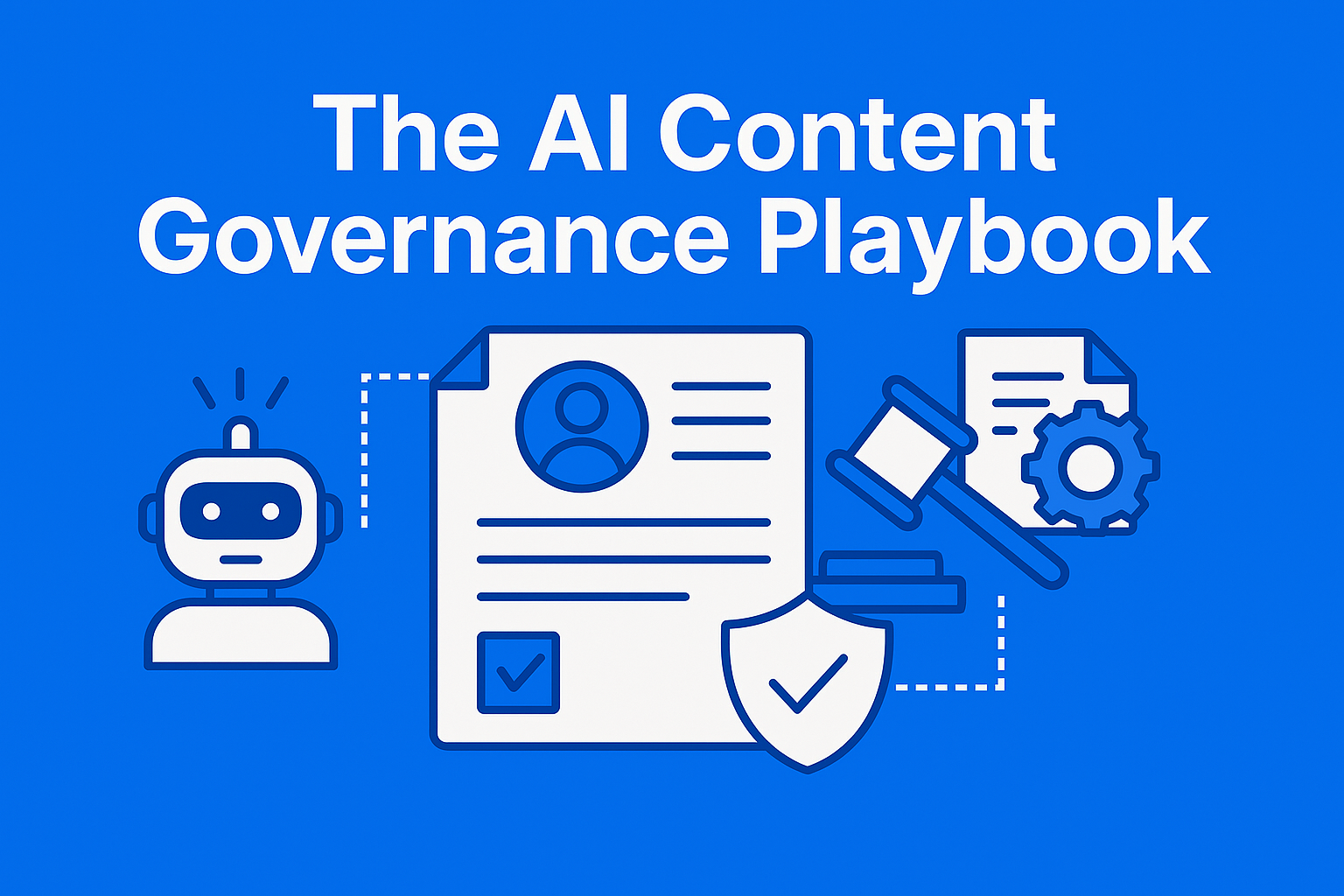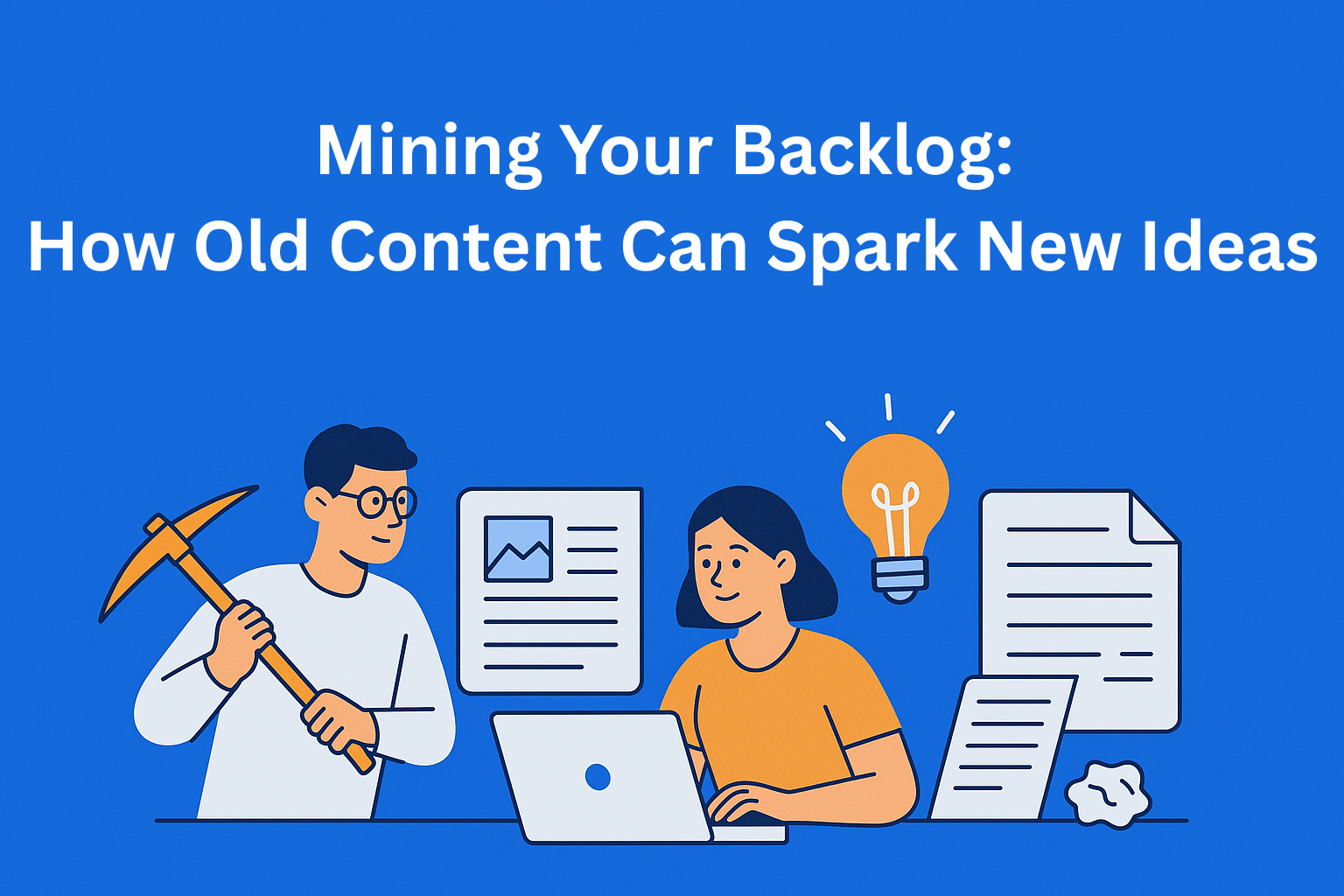The AI Content Governance Playbook for Large Enterprises
Discover how large enterprises can harness generative AI through effective AI content governance. A playbook for scaling content while protecting brand integrity, ensuring regulatory compliance, and minimizing risk.

The rise of Generative AI has opened new frontiers in content creation. For large enterprises, this shift presents a powerful opportunity to accelerate production, reduce costs, and enhance personalization at scale. However, with opportunity comes responsibility, particularly when operating under tight legal, regulatory, and brand standards.
In this playbook, we outline the essential pillars of AI content governance that corporations must adopt to stay compliant, consistent, and credible in the age of AI.
Key Takeaways
- AI-generated content must always be reviewed by humans-errors can cause legal or reputational damage.
- Clearly assign content ownership, accountability, and approval roles in your workflow.
- Legal and compliance teams should be involved early, not at the end of the publishing process.
- Establish strict brand voice and tone guardrails to prevent off-brand outputs from AI.
- Prompts are strategic assets-maintain a centralized, documented prompt library.
- Scale AI use gradually-start small, monitor results, and expand once governance is working.
- Continuously audit AI outputs for factual accuracy, tone alignment, and bias.
- Educate your teams-train everyone involved in AI workflows on ethics, limitations, and best practices.
- Governance ensures AI supports your content goals safely, without sacrificing speed or compliance.
1. Understand the Risks Before You Reap the Rewards
AI can produce impressive content quickly, but it doesn't always get it right. "Hallucinations" - confidently incorrect information generated by AI models are a known issue. Without careful oversight, these errors can damage credibility or even lead to regulatory repercussions.
Actionable Steps:
- Establish a policy that no AI-generated content is published without human review.
- Categorize risk levels based on content type. A blog may be low-risk, but investor relations material or health advice may be high-risk.
- Maintain transparency: clearly disclose if content was AI-assisted where relevant.
2. Define Ownership and Accountability
One of the most overlooked aspects of using GenAI in large organizations is accountability. Who "owns" a piece of content that was drafted by AI? And who is responsible when it goes wrong?
Recommendations:
- Assign specific roles: content owners, reviewers, legal approvers, and final sign-off authorities.
- Document workflows. AI doesn't absolve teams of accountability - it shifts it.
- Track every version of content, including the AI prompt used and the output it generated.
3. Involve Legal and Compliance Early
Legal teams should not be the last stop in your AI content workflow. They need to be embedded from the start to ensure guidelines are followed and risks are mitigated.
Best Practices:
- Educate legal and compliance stakeholders about how GenAI works.
- Build custom approval workflows that route content through legal, where needed.
- Ensure that terms of use, data privacy, and intellectual property considerations are clearly addressed.
How EasyContent Can Help: EasyContent allows enterprises to design custom workflows where legal and compliance reviews are built into the publishing process. You can ensure that no content goes live without being seen by the right eyes.
4. Set Clear Brand and Messaging Guardrails
AI is only as good as the input it receives. Without proper guidance, it may generate tone-deaf, off-brand, or even contradictory messaging.
To Do:
- Develop and enforce prompt libraries that align with brand voice.
- Maintain up-to-date brand guidelines and messaging frameworks.
- Regularly audit AI-generated outputs to ensure alignment with strategic messaging.
5. Create a Centralized Prompt Strategy
Prompts are now strategic assets. A well-crafted prompt can generate a solid first draft; a weak one can result in misleading or unusable content.
Prompt Governance Tips:
- Maintain a central repository of vetted, approved prompts.
- Train internal teams on how to write effective, brand-safe prompts.
- Require attribution of prompts and associate them with published content for traceability.
6. Build for Scalability - But Start with Control
The ultimate goal is to scale AI-assisted content creation across departments, but this cannot be done haphazardly.
Phased Approach:
- Pilot with one team or department before rolling out company-wide.
- Monitor key metrics: content accuracy, review turnaround time, compliance flags.
- Gradually expand to other teams once governance frameworks prove effective.
7. Audit and Monitor AI Outputs
A good governance program includes continuous oversight.
What to Monitor:
- Misinformation or factual errors.
- Repetition and redundancies across AI content.
- Instances of bias, exclusionary language, or compliance issues.
Recommendation:
- Use third-party tools to scan AI-generated text for plagiarism, hallucinations, and tone-of-voice alignment.
- Conduct quarterly content audits to assess AI reliability and content quality.
8. Educate and Train Your Teams
Your content, legal, marketing, and comms teams are your first line of defense. Ensure they're equipped to collaborate effectively in an AI-assisted workflow.
Training Should Include:
- How AI models work and their limitations.
- Ethical implications of using AI.
- Prompt writing best practices.
- Review and approval workflows.
Ongoing learning is key. As AI evolves, so should your team's understanding of it.
Final Thoughts: Embrace AI with Intention
AI is not a silver bullet, nor should it replace human judgment, especially in complex enterprise environments. It is, however, a powerful tool when governed well.
The most successful enterprises will not be those who use AI the most, but those who use it most responsibly. Governance isn't about slowing down innovation - it's about making sure that when you scale, you scale safely.
By embedding governance into every stage of your content creation process - from prompt to publish - you ensure quality, compliance, and consistency.
And with platforms like EasyContent helping manage these workflows at scale, enterprise content teams can finally combine speed and safety.






